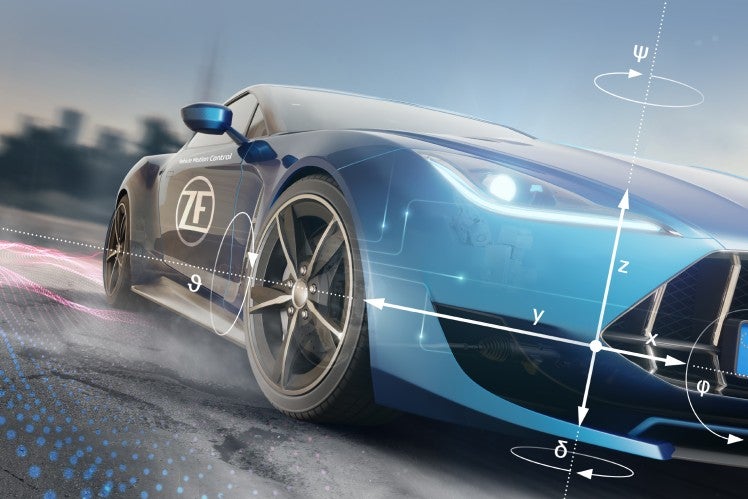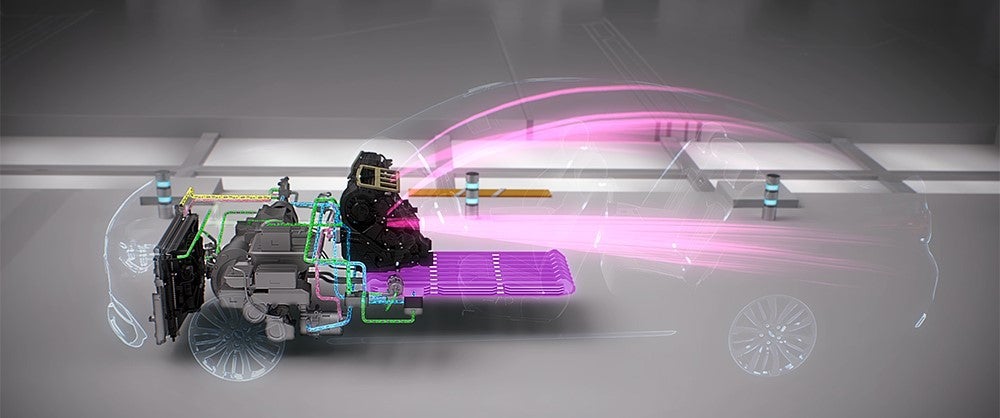
ZF says it has launched new software that ensures the longitudinal, lateral and vertical dynamics of a vehicle are optimised. The need for this solution, it says, is especially true for automated driving, when the driver turns away from active driving and the focus is on comfort.
ZF’s cubiX software – the company says – controls all chassis systems and ‘ensures harmonious acceleration and braking, precise steering, and balanced damping’.
The first production vehicle with the new ZF cubiX software is the Lotus Eletre electric SUV from the Geely Group. From the middle of the year, the vehicle will be available in Europe. ZF says its software controls all chassis functions such as brakes, front and rear axle steering, and active roll stabilizers as well as the electric drive of the new sports car.
Further production start-ups for the new ZF chassis systems software will ‘follow from 2023’, ZF says.
“With the series premiere of our cubiX software, we impressively demonstrate our system competence for vehicle dynamics of software-defined vehicles,” says André Engelke, Head of the Vehicle Motion Control System House at ZF. “We can harmoniously control the entire longitudinal, lateral and vertical dynamics of the vehicle according to Lotus’ specifications. The system know-how from the entire ZF Group meets decades of experience in the fields of braking and steering systems, active dampers, and driveline technology.”
First ‘pure software’ product from ZF
How well do you really know your competitors?
Access the most comprehensive Company Profiles on the market, powered by GlobalData. Save hours of research. Gain competitive edge.

Thank you!
Your download email will arrive shortly
Not ready to buy yet? Download a free sample
We are confident about the unique quality of our Company Profiles. However, we want you to make the most beneficial decision for your business, so we offer a free sample that you can download by submitting the below form
By GlobalDataAs ZF’s first pure software product, ZF says cubiX offers another decisive advantage: The platform is compatible with various actuators such as dampers, brakes or rear-axle steering – regardless of the manufacturer or the specific design. This, it says, gives manufacturers the flexibility to implement different model series with one and the same control platform without additional integration effort.
Future updates or upgrades to the software can be carried out ‘over-the-air’. In this way, the software remains up to date throughout the vehicle’s life, meaning that additional functions can always be added after the vehicle has been delivered.
Software Defined Vehicle
ZF also points out that cubiX is an example of a trend towards the software-defined vehicle: away from the many individual controls of hardware components, towards overarching domain and zone architectures. This development takes into account the increasing complexity of automotive control software. Until now, dampers, brakes or rear-axle steering have each had their own control unit that has had to be integrated into the overall architecture of the vehicle.
The new electrical and electronic vehicle architectures bundle all the software for a specific functional area of the car – known as the domain – on a central control unit. “This overarching control saves vehicle manufacturers effort as well as compromises in fine-tuning and driving dynamics in terms of vehicle performance, comfort and efficiency. At the same time, it gives them the chance to combine complex assistance systems,” said André Engelke. “With cubiX, we have such software that can be perfectly integrated into the new architectures.”
cubiX was developed at multiple ZF sites globally (Germany, Czech Republic, Romania, UK, India, and China), the application project driven out of Region Asia Pacific.







